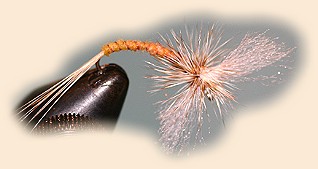The fly is built on a curved hook of your choosing,
which is cranked about twenty degrees toward the
tyer, a quarter way back from the eye. It is
dressed round the bend to get the tails to support
the weight of the hook shank over the greatest
possible area, so it can be dressed sparsely.
Materials Flat Spent Spinner (Mayfly)
Thread: Gudebrod 8/0, straw
Hook: Klinkhamer type emerger hook, cranked, see notes above.
Tails: Stiff hackle fibres, tied on nearside, splayed
and inclined toward the tyer.
Rib: 5X nylon mono.
Abdomen: Dubbing to match the natural.
Parachute loop: Continuation of the ribbing nylon.
Wings: Hackle fibres, polypropylene yarn, clear antron etc.
Hackle: For support and light pattern - match the hatch
and light conditions.
Thorax dubbing: Hare's fur to match the natural.
Tying Instructions: Flat Spent Spinner
1. Lay a bed of thread from the eye to a third
of the way round the bend.
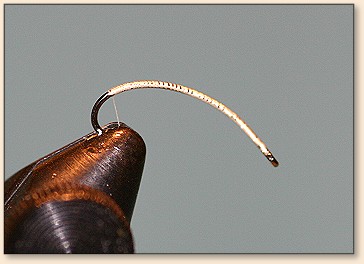
2. Tie in hackle fibre tails, at ten
degrees toward the tyer and splayed out.
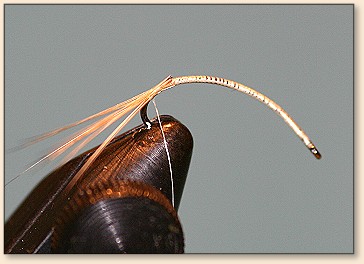
3. Shows the angle of the tails and the crank
in the hookshank.
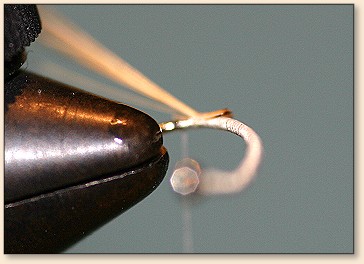
4. Tail fibres and rib securely tied in.
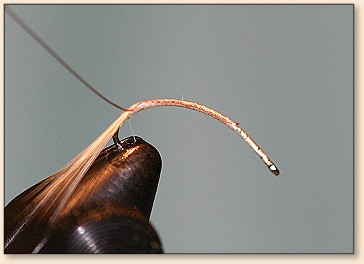
5. Add a little dubbing to the thread.

6. Dub abdomen and tie in.
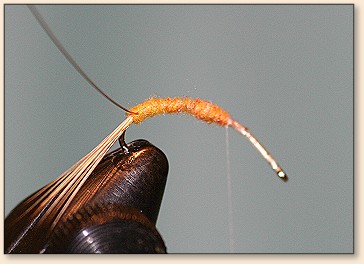
7. Rib the body with the nylon and tie in –
continue tying down the rib, until you get
halfway along the thorax area.
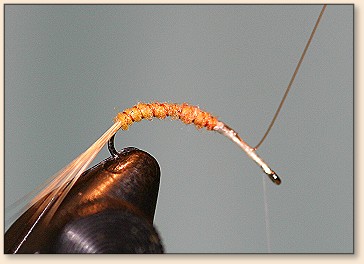
8. Tie in the winging material, immediately
in front of the nylon post.
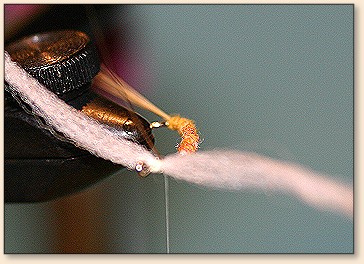
The wings should lay in the same plane as the
hook bend, but inclined toward the tyer at five
degrees.
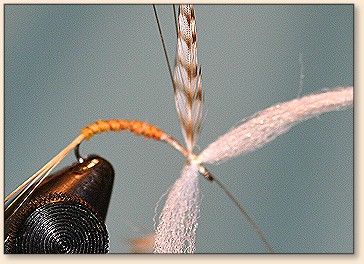
9. Tie in the hackle and make the parachute
loop, just behind the wings – the open end of
the loop comes out behind the eye.
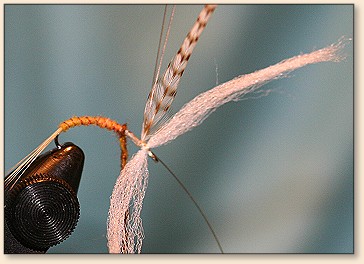
10. Dub the thorax mixture onto the thread.
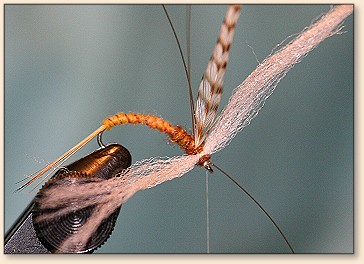
11. Wind the dubbing to cover the thorax – do
not trap the hackle and loop, nor the wings.
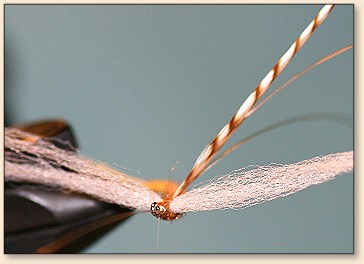
Whip finish at the eye.
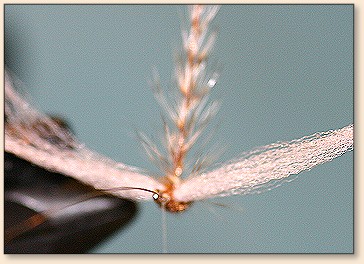
12. front view.
13. Spiral the hackle around one side of the
loop, maintaining tension, seven or eight turns.
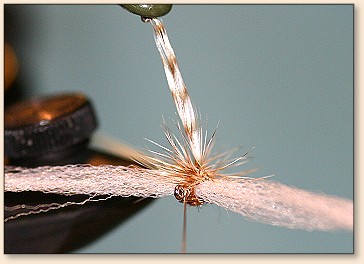
14. Pull the free end of the nylon to close
the loop and lock in the parachute hackle.
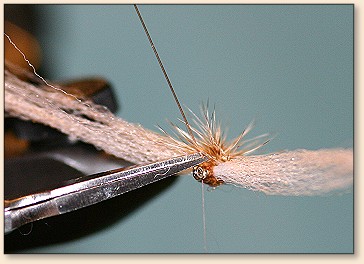
15. Parachute is home, cut off excess hackle.
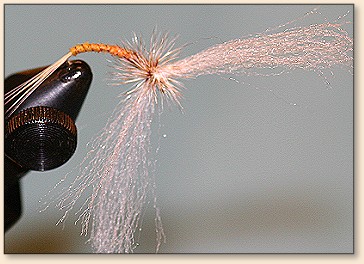
16. Cut off excess nylon and thread.
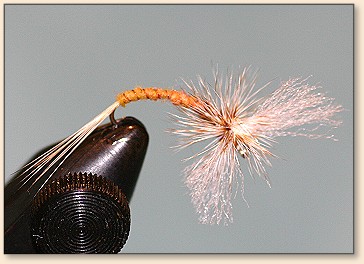
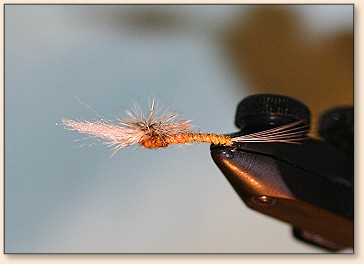
17. Top view, trim to match the natural's wing shape.
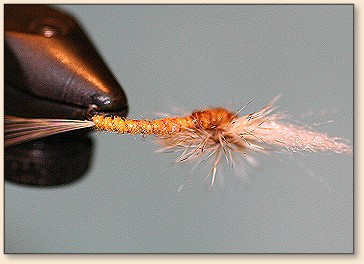
18. – onwards- . . . COMPLETE ~ Roy
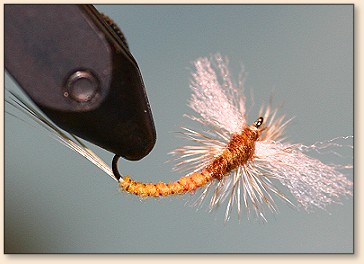
About Roy:
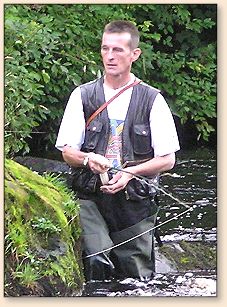 Born 1953 near the Giant's Causeway, Northern
Ireland; started fishing when I was four or five,
flyfishing a few years later, tying flies since
I was about ten years old, bred bantams ducks
and pheasants for their feathers. Self taught
tyer, learned from Hanna, Skues, Stewart and
Pritt. There were fairies at the bottom of the
garden and a trout stream at the end of the
first field.
Born 1953 near the Giant's Causeway, Northern
Ireland; started fishing when I was four or five,
flyfishing a few years later, tying flies since
I was about ten years old, bred bantams ducks
and pheasants for their feathers. Self taught
tyer, learned from Hanna, Skues, Stewart and
Pritt. There were fairies at the bottom of the
garden and a trout stream at the end of the
first field.
When the stream was dredged in the late 1960's
I rebuilt it as a self cleaning entity producing
a good head of brown trout.
Founder member of the Wandle Wands, the self-appointed
group for restoration of the River Wandle, a tributary
of the Thames in London UK, once a designated sewer,
now producing wild fish in excess of ten pounds.
My river flies are mainly nymphs from Skues; my Avon
Special emerger, developed for English chalkstreams
1981; my Reversed Parachute and Cranky Cripple emergers,
similarly designed for those canny southern browns; my
EasyPeasyUSD for presenting an effective light pattern
to fish feeding on the adult insects and the Flat Spent
Spinner, for the tail end of the hatch.
Favourite flies include the hare's ear & copper
wire nymph; CDC & Elk, Skues' Little Red Sedge
and various homespun caddis patterns for pupa
and adults.
Ambitions – to ensure my grandchildren have a
beautiful planet to live on and to live forever
by an ever changing stream full of trout grayling
and salmon.
Other minor obsessions - Citroen DS and Sharpes Canes.
~ Roy

